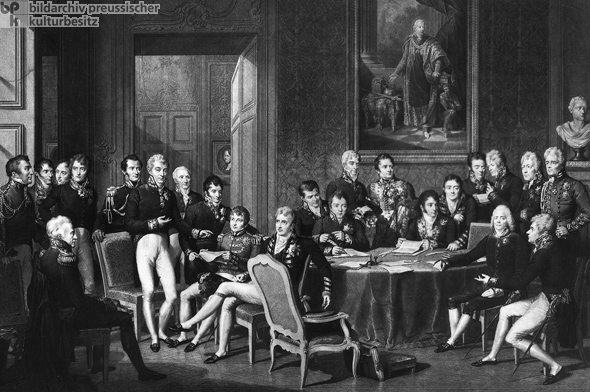One cannot imagine a corporate market-oriented business of today without its communication with the environment. Through communication, an organization informs the public about its products and services, the novelties it introduces, how it provides its services, and the possibilities to meet the potential client needs, trying to win them over and create room for improving its financial standing in doing so.
The current market trends, featuring diversified supply, growing competition, higher living standard and purchasing power, and better level of consumer information require that more efforts should be invested in stimulating the demand for all types of products and services.
It is very important to create trustful consumer attitude towards a company/organization, which is done through public relations, influencing the public trust in such company and its image not only in the eyes of consumers, but also its stakeholders, government organizations, investors, social community, suppliers, distributors, employees, and competitors.
The main objective of PR is to influence individuals or groups, through a dialogue with all those whose perception, opinion, and attitude may affect or contribute to reaching the organization’s success. For the last two decades, PR has spread to the public, private, and non-profit sectors, and most organizations adopt it as its indispensable, integral part.
One of the most famous definitions of PR is “the practice of managing the communication between an organization and its target public“. The notion of target public in this case means the people who are important for the organization, and whose attention followed by their opinion and attitudes created result in decisions and actions influencing and benefiting the business of such organization.
Often quoted definition set by the Great Britain’s Institute of Public Relations says that PR is “the planned and sustained effort to establish and maintain goodwill and mutual understanding between an organisation and its publics “.
In that respect, public relations can go in 3 directions:
- Ability to change the public opinion
- Ability to create an opinion where it lacks
- Ability to reinforce a created public opinion
What does it mean: This is a good PR?
The simple answer is: It works. We feel that a PR is good because it makes a good impression on us about a company and its products, services, and people and we have a positive opinion and accept the delivered message. We accept such PR because it acknowledges some of our needs,  prejudice or current mood or wishes.
prejudice or current mood or wishes.
PR is described as fundamental “glue” that holds an organization together and connects the strategies at the corporate, business and operational levels. This is a powerful, often “hidden” though, strategic role adding to the organization’s quality.
Image and identity are the most important for PR
For corporate goals, the image can be described as a mixed perception of a company, its products and services. It is a complex set of all impressions we have gained either by seeing the name, or observing the behaviour, or hearing or reading about some activity or facing some other material evidence. Instant image is the most important for every organization, closely followed by desired image, which is how a company wishes to be perceived. It is similar to the image built by an individual about themselves, containing 3 integral parts: reality, ideal, and expectations or aspirations. (Davis, 2005.)
If the identity is seen to comprise the following components: logo, iconic colours, web presentation, business card, slogan, business premises and windows, uniforms and employee behaviour, product packaging, business car visuals, etc. we come to the conclusion that all of them create the full picture of a company and send some very strong messages on how the company perceives itself and how it wishes to be perceived.
That is why it should be the responsibility of public relations. PR professionals have, or at least should have a comprehensive insight into the company business, its mission and vision, corporate culture and its environment to be able to do their best at this (from the company’s aspect) “personal” business so that the target public could, as best as possible, accept and recognise the company as relevant for their needs in line with its business.
Public relations planning includes the following stages (Filipović, 2003.):
- To analyse and diagnose the situation;
- To define the goals and strategies;
- To define the assets (budget) required for implementing the public relations programme;
- To define the public relations programme;
- To define the tactics for implementing the public relations programme;
- To assess and monitor the achieved results and measure the achievements.
The core steps for PR campaign planning are:
- To identify and analyse the target groups,
- To plan the corporate goals,
- To develop the strategies,
- To develop the tactics and programme for implementing the campaign,
- To develop the media plan,
- To create the media messages,
- To implement the campaign,
- To assess the achieved results of the campaign.
The difference between marketing and PR
There is often the confusion over whether the entire PR is in fact marketing under a different name. PR makes the job easier for marketing as creating the mutual understanding between an organization and its target public through PR contributes to marketing communications and sets a very solid platform for marketing campaigns.
Marketing is interested in clients only, whereas PR is about creating the best overall conditions for the organization; marketing is focused on sales and development strategies, whereas PR scans the entire business environment. Their target groups are entirely different as marketing covers customers/consumers/users, agents, distributors and competitors, and PR targets employees (internal PR), media representatives, social communities, financial institutions and investors, and government organizations.
Crisis PR
PR aims to prevent a problem from growing into crisis and to create a positive attitude toward resolving the crisis. Crisis management is tasked  to prevent crisis if possible, or if the crisis still hits to minimize it as much as possible. Crisis management includes the following steps:
to prevent crisis if possible, or if the crisis still hits to minimize it as much as possible. Crisis management includes the following steps:
- PR must send positive arguments of the organization that it does not deserve crisis
- To identify and recognise potential crises, as much as possible
- To have a detailed plan in place as to what to do in all forms of defined potential crises
To be aware of potential problems and crises and ready to react, we need to avoid all those saying that crisis will never hit, that crisis happens only to others and all those saying that crisis management planning is nothing but a waste of time.
In case of crisis, PR people must be tough and composed when all around them are losing their heads and then there is a chance to turn the crisis into their own advantage. It is essential to explain in simple language what has happened, what has been done about it and of course, to show the care and understanding of the organization.
Also, it is important to set the priorities. In times of crisis, the financial consequences should come last, after the people, employees, environment, etc. It is important, if possible, to gain a few words of support from influential people, media people or people in the company’s industry. It is also very important that employees are not neglected at those times, in particular if they are involved in crisis in any way. They and their families should be informed of the entire situation instead of being neglected. In such situations, each employee can become the company’s ambassador.




































 Srpski
Srpski English
English